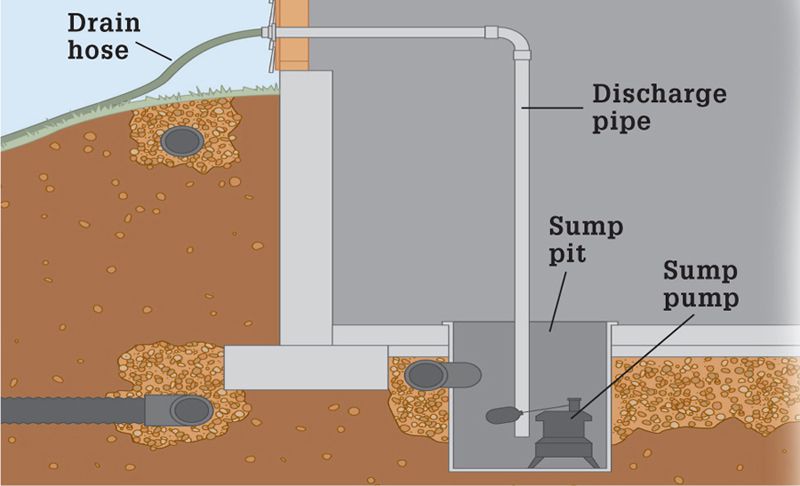
A submersible sump pump is installed in a pit beneath a basement floor to pump water out before it seeps up into the basement.
If water continues to accumulate in your basement despite all your efforts at regrading and sealing your basement walls, installing a sump pump may be your only option for resolving the problem. Permanently located in a pit that you dig beneath your basement floor, the sump pump automatically kicks in whenever enough water accumulates in the pit to trigger the pump float. The water is then pumped out of the basement through a pipe that runs through the rim joist of the house.
Because you’ll be digging well beneath the basement floor, make certain there is no sewer pipe or water supply pipe in the digging area. Contact a plumber if you do not know for sure that the area is clear.
The purpose of a sump pump is to collect and eject water that accumulates beneath your basement floor (usually due to a high water table) before it can be drawn or forced up into the basement. The most effective sump installations have drain tile running around the entire perimeter of the house and channeling water to the pump pit. This system can be created as a retrofit job, but it is a major undertaking best left to a pro.

A submersible sump pump is installed in a pit beneath a basement floor to pump water out before it seeps up into the basement.
 HOW TO INSTALL A SUMP PUMP
HOW TO INSTALL A SUMP PUMP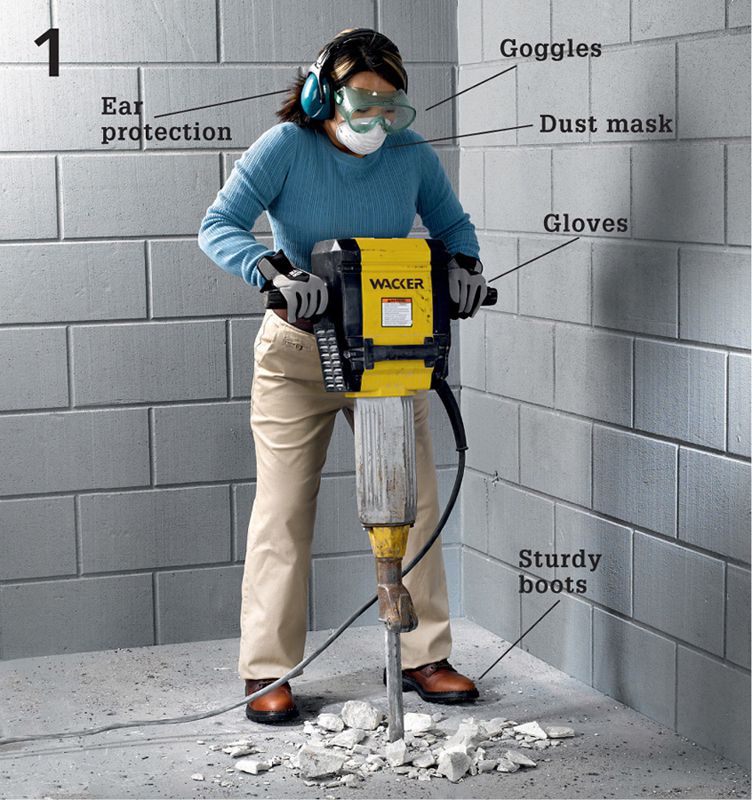
Dig the sump pit. Start by finding the lowest point of the floor (or the spot where water typically accumulates) that is at least 8" from a foundation wall. Outline an area that’s about 6" wider than the pit liner all around. Remove the concrete in this area. Basement floors are typically 3 to 4" thick, so renting an electric jackhammer is a good idea.
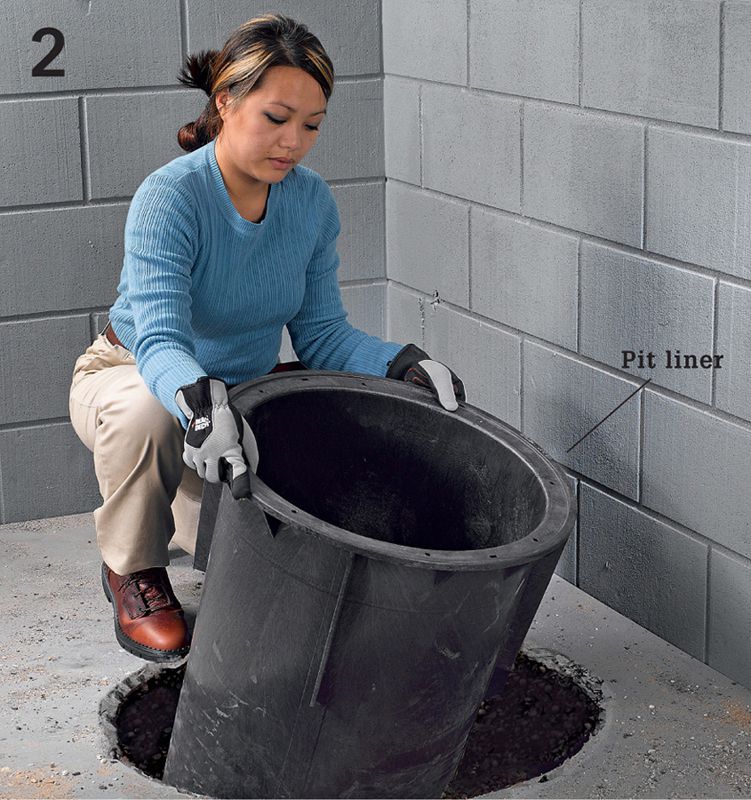
Install the pit liner after digging a hole for it in the granular material under the floor. The hole should be a few inches wider than the liner. Remove the excavated material right away. Add gravel to the bottom of the hole as needed to bring the liner level with the top of its rim at floor level.
Pack the liner in place by pouring 1/2" gravel around it. Add a 1" base of gravel and then mix concrete to patch the floor. Trowel the concrete around the rim with a float so the patch is level and smooth.
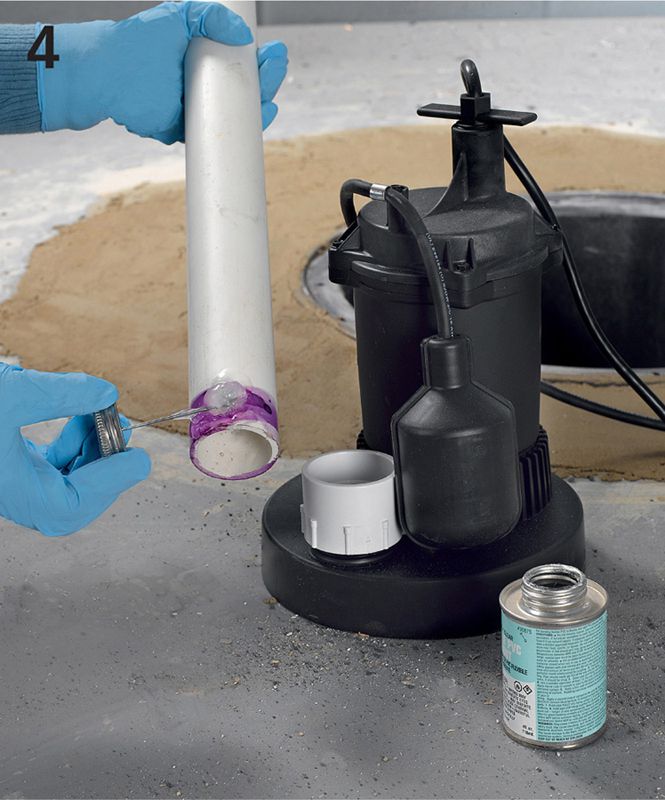
Prepare the sump pump for installation. Thread a PVC adapter fitting onto the pump outlet, and then solvent glue a PVC standpipe to the adapter. The standpipe should be long enough to extend about 1 ft. past the liner rim when the pump is set on the bottom of the liner.
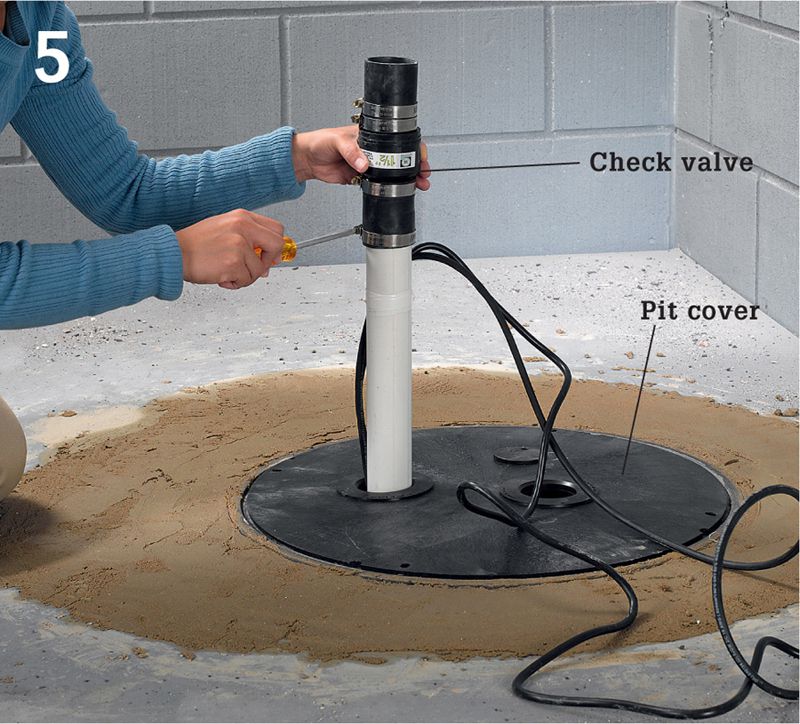
Attach a check valve to the top of the standpipe to prevent the backflow of water into the pump pit. Solvent weld another riser to fit into the top of the check valve and run upward to a point level with the rim joist, where the discharge tube will exit the basement.
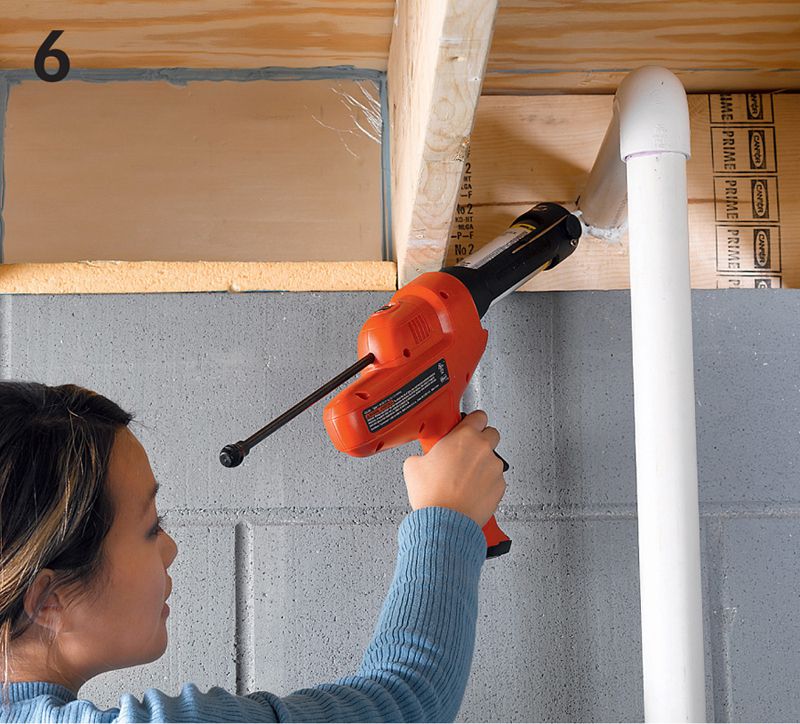
Drill a hole in the rim joist for the discharge tube and finish routing the drainpipe out through the rim joist. Caulk around the tube on both the interior and exterior sides. On the exterior, attach an elbow fitting to the discharge tube and run drainpipe down from the elbow. Place a splash block beneath the drainpipe to direct water away from the house. Plug the pump in to a GFCI-protected receptacle.